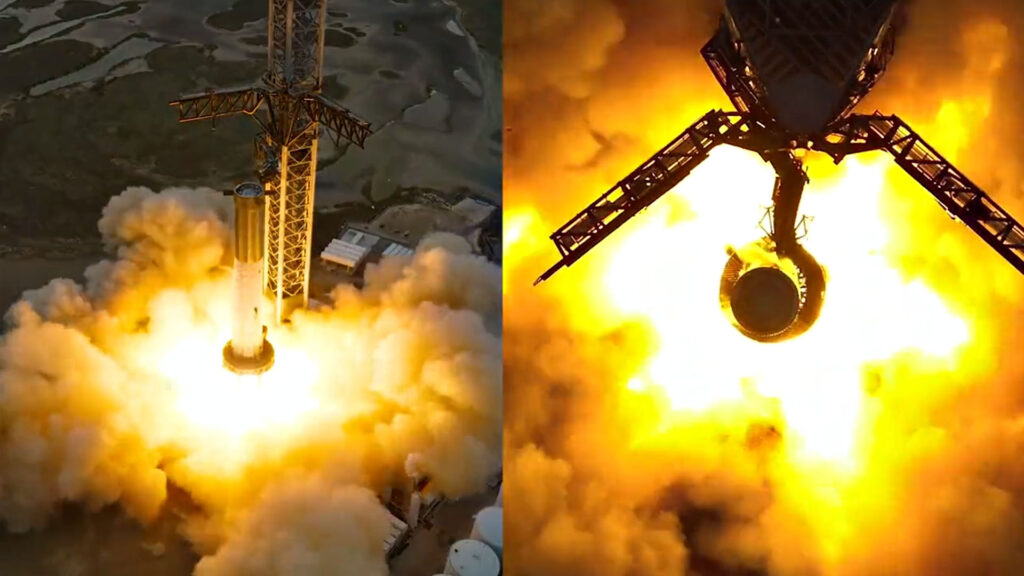Several signals support the imminence of the famous orbital flight that SpaceX has wanted to perform for months with Starship, its super rocket.
These are unmistakable signs. SpaceX would be on the verge of doing – finally! — his orbital flight with the Starship, his future Swiss Army knife launcher. Clues even suggest that the takeoff would occur in the middle of the month, around April 10 and 11, 2023. Success would be an important step forward in developing this new rocket.
Many clues in favor of a flight of the Starship very soon
First signal in favor of the imminence of an orbital flight of the Starship: the launcher has just been moved to its launch pad, notes the NASASpaceflight site. The two components of the rocket (the Super Heavy first stage and the Starship upper stage) should soon be stacked. Moreover, Ars Technica noted on April 1 that the Super Heavy was placed on a launch pad.
Second signal to consider: the reinforcement of the launch support with additional shielding, so that it can withstand the extreme heat emitted when the Super Heavy fires its engines. Ars Technica indicates that technicians have been working around the launch site for a few weeks to protect the support and the launch tower.
There is also another sign that pleads for a take-off at short notice. On its website, the American space agency indicates that it has reserved an observation plane for two days, on April 10 and 11. It is not yet known for which specific task. However, this plane, model WB-57, which reaches high altitudes (18 km), is used in particular to follow the shootings of rockets.
NASA is following the activities of SpaceX with great interest, as the company has over time become a key partner for American activities in space. As part of the Artemis program, moreover, SpaceX has been entrusted with several key missions. In particular, it is with a version of the Starship that the company will shuttle between the space station and the Moon.
Fourth clue, which we already know: SpaceX succeeded in February in igniting almost all of the Super Heavy’s engines (31 out of 33) during a test, without exploding. Although two engines failed, the test was deemed satisfactory. This static firing made it possible to collect data for the orbital test. Another important test was passed in January.


Finally, a fifth sign suggests that the US federal administration in charge of civil aviation and airspace in the country (FAA) should give SpaceX a license authorizing it to carry out this flight. This is indicated by a source at Ars Technica, citing significant progress for the precious sesame to be granted in the next two weeks.
This is perhaps the most delicate obstacle to overcome, since SpaceX does not have its hands on it, unlike the rest. The FAA has already asked the company to make special arrangements to limit the nuisance of such an operation, particularly at the environmental level. We will quickly know if SpaceX’s efforts in this area have been sufficient.
Subscribe to Numerama on Google News to not miss any news!
